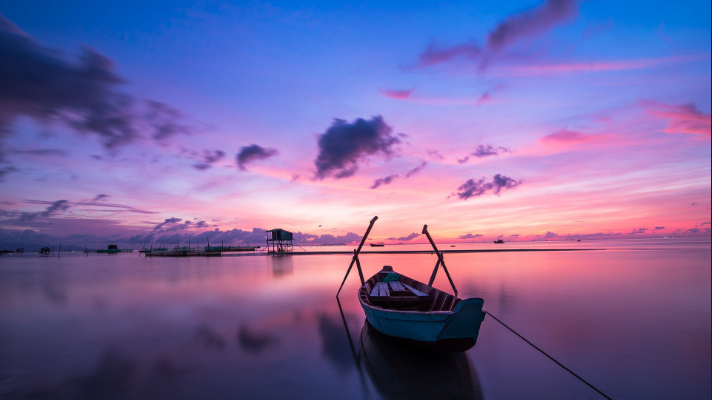beautiful lakes in Europe
lakes in Europe
Lakes are big pools of water that form in natural hollows. Some are basins of impermeable rock that are fed by streams, while others are filled by water seeping up from below. They may be rich in life or almost barren. The more plant nutrients a lake contains, the more quickly it becomes overgrown and turns into a marsh or swamp.
1.The Lake District
The region is named after the 16 lakes and many smaller water bodies, called tarns, which are found in higher areas. However, only one of the lakes, Bassenthwaite Lake, is actually called a lake; the others are known as waters or meres. Commonly defined by the boundary of the UK’s largest national park, the Lake District covers an area of 912 square miles (2,362 square km).
The Lake District is a scenic area of mountains, moorlands, deep valleys, and lakes located within the county of Cumbria in northwest England. It contains most of the country’s highest land, including Scafell Pike, its tallest peak, as well as England’s longest and deepest lakes Windermere and Wastwater, respectively.
QUEEN OF THE LAKES Seen here with a cloud of mist hanging over it, Derwentwater is thought by many to be the most beautiful of the Lake District’s lakes and is referred to as the Queen of the Lakes.
COMMON PREDATOR
The blue damselfly is a common predator on many UK waterways and large lakes. Unlike dragonflies, damselflies fold their wings along their body when resting.
However, much of the landscape of the Lake District has been shaped by episodes of glaciation over the last 2 million years. Indeed, the region is known for its classic examples of glacial landforms. The most obvious of these are the broad valleys with their U-shaped cross sections, at the bottom of which often sit ribbon lakes.
The Lake District England’s highest and arguably most picturesque region, a landscape shaped by glaciers and loved by tourists Glacial landscape The underlying geological structure of the Lake District is a huge granite dome, on top of which sits a series of three broad bands of rock of different ages and origins. Variations in bedrock can be seen in the different features across the region, from volcanic outcrops to slate scree slopes.
2.Lake Geneva
Lake of two halves Lake Geneva lies on the course of the Rhône River, which enters through a delta at its eastern end and leaves at the western end through the city of Geneva.
Known as Lac Léman in France, Lake Geneva is a crescent-shaped lake on the northern side of the Alps, stretching along the border between southeastern France and southwestern Switzerland. The largest of the alpine lakes, it is 45 miles (73 km) long, up to 9 miles (14 km) wide, and has a shoreline of just over 120 miles (200 km).
The lake is geographically divided into two basins separated by the Strait of Promenthoux. The Large Lake, to the east, is the widest section, and reaches a maximum depth of 1,020 ft (310m).
The Small Lake, to the west, is much narrower and shallower. Lake Geneva is notable for its rhythmical fluctuations in water level, known as seiches, caused by strong winds and rapid changes in atmospheric pressure.
Also READ : Longest Rivers in the world
3.Lake Ladoga
Located in northwestern Russia, near the border with southeastern Finland, Lake Ladoga is Europe’s largest lake. Its total area is about 6,800 square miles (17,700 square km); from north to south it is 136 miles (219km) long, and it is 86 miles (138km) across at its widest point. The deepest part of the lake is near the tall, rocky cliffs of its northern shore, where it reaches 750 ft (230m) deep just west of Valaam Island, one of the largest of more than 650 islands in the lake. The southern part of the lake is shallower and has a lower shoreline.
Lake Ladoga The largest lake in Europe, with a huge drainage basin made up of thousands of smaller lakes and rivers There are more than 50,000 lakes and 3,500 rivers in Lake Ladoga’s drainage basin
WOODED SHORELINE
Much of the shoreline of Lake Ladoga is covered in coniferous and deciduous trees. The conifers include pine and spruce, and deciduous species include willows and birches.
AQUATIC BLOOM
The amphibious bistort, an aquatic plant in the knotweed family, is found in the shallows of Lake Ladoga and along the Neva River. NE. Europe Lake and sea Lake Ladoga formed in a graben, a depression between two fault lines, which has since been reshaped by glaciers. During the last ice age, it was part of the Baltic Ice Lake, which eventually formed the Baltic Sea when the ice retreated. Lake Ladoga is now separated from the Baltic Sea to the southwest by the Karelian Isthmus.
The Neva, the only river that flows from the lake, leaves at its southwestern corner, passes through St. Petersburg, and drains into the Gulf of Finland (part of the Baltic Sea).
4.Lake como
Laga di Como is the most popular lake in Italy. The lake, shaped like an inverted Y is one of the most beautiful lakes you will ever lay your eyes upon. The water is a pretty shade of blue and the surrounding mountains make the setting more picturesque.
5.Lake Annecy
The lake was formed about 18,000 years ago, at the time the large alpine glaciers melted.The lake flows through the city of Annecy which is why the city is also called ‘’Venice of the Alps’’.Lake Annecy is a dreamy lake tucked away in southeastern France. The pristine lake is located at the foothills of the French Alps and is known as the cleanest lake in Europe.









1 thought on “Top 5 beautiful lakes in europe”
Comments are closed.